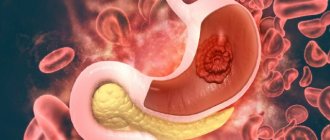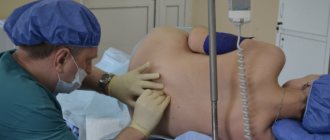Probably each of us has heard about the placenta, but usually even pregnant women have a very general idea of its purpose and function. Let's talk about this amazing organ in more detail.
The placenta connects mother and child, it is needed to nourish the baby, after birth it will no longer be there - as a rule, this is the only knowledge about the placenta at the beginning of pregnancy. As the pregnancy progresses and after undergoing an ultrasound, the expectant mother learns the following about the placenta: “the placenta is located high (or low)”, “its degree of maturity is now such and such.” Then the placenta, like the baby, is born. True, this event is no longer so significant for many mothers against the backdrop of the arrival of the long-awaited baby.
The placenta does not appear immediately. It is formed from the chorion - the embryonic membranes of the fetus. The chorion looks like many elongated outgrowths of the membrane surrounding the unborn child, which penetrate deep into the wall of the uterus. As pregnancy progresses, the outgrowths of the chorion increase in size and turn into the placenta; it is finally formed by the end of the first trimester of pregnancy.
The new organ has the appearance of a disk, or cake (that’s exactly what “cake” is translated from Latin as the word placenta). One side of the placenta is attached to the uterus, and the other “looks” towards the baby. It is connected to the fetus by the umbilical cord. There are two arteries and one vein running inside the umbilical cord. Arteries carry blood from the fetus to the placenta, and veins carry nutrients and oxygen from the placenta to the baby. The umbilical cord grows with the child and by the end of pregnancy its length is on average 50–55 cm.
What is placenta
During the development of the embryo, a chorion is formed on its outer shell - specific outgrowths. It gradually grows into the woman’s uterus and increases in size. As a result, the so-called "children's place"
The process comes to an end at 12-16 weeks after conception. At this point, the organ becomes flat, resembling a disk in shape (placenta in Latin). The connection between the mother and child is provided by the umbilical cord. It has a length of 5-55 cm, and functions as follows:
- the artery delivers nutrients and oxygen;
- the vein is necessary to remove processed substances.
The formed placenta consists of decidual tissues, embryoblast and trophoblast, and the main element is called the villous tree. This organ is designed to prevent Rh conflict. Its thickness is approximately 3.5 cm, and its diameter is 20 cm; weight – about 600 g.
The development of the placenta until the 4th month occurs faster than the growth rate of the embryo. At this point, the villi and blood vessels are completely formed. If a child dies at any stage, degenerative phenomena increase.
The placenta consists of two sides:
- rough maternal surface, formed from the basal component of the decidural layer, facing the uterus;
- the fruit side, covered with the amniotic layer, turned towards the embryo.
If a woman is pregnant with twins, there are three options:
- Dizygotic twins implanted separately. The placenta is divided into two parts, each of which has its own membranes and blood vessels.
- Dichorionic twins separated from each other by a septum. The main part of nutrition comes from amniotic fluid, and there are practically no blood vessels in the placenta membrane. In this case, pregnancy management under the supervision of a specialist in our center is mandatory, since the risk of transfusion syndrome is high.
- Monoamniotic monochorionic twins not separated by a septum.
The placenta begins to form from conception. Starting from the 2nd week of pregnancy, its growth is activated, by the 13th the structure is fully developed, and maximum activity is observed by the 18th week. Complete cessation of growth and changes occurs only after delivery.
What is dangerous about changing the size of the placenta?
Why are doctors so worried about significant changes in placenta size? Usually, if the size of the placenta changes, functional insufficiency in the functioning of the placenta may also develop, that is, so-called feto-placental insufficiency (FPI), problems with the supply of oxygen and nutrition to the fetus, will form. The presence of FPN may mean that the placenta cannot fully cope with the tasks assigned to it, and the child experiences a chronic lack of oxygen and the supply of nutrients for growth. In this case, problems can grow like a snowball, the child’s body will suffer from a lack of nutrients, as a result, it will begin to lag behind in development and IUGR (intrauterine growth retardation in the fetus) or fetal growth restriction syndrome (FGR) will form. To prevent this from happening, it is best to engage in advance prevention of such conditions, treatment of chronic pathology even before pregnancy, so that exacerbations do not occur during pregnancy. During pregnancy, it is important to control blood pressure, blood glucose levels and protect the pregnant woman as much as possible from any infectious diseases. You also need a good diet with enough proteins and vitamins. When diagnosing “placental hypoplasia” or “placental hyperplasia”, careful monitoring of the course of pregnancy and the condition of the fetus is first required. The placenta cannot be cured or corrected, but there are a number of medications prescribed by a doctor to help the placenta perform its functions. In the treatment of emerging feto-placental insufficiency, special drugs are used - Trental, Actovegin or Curantil, which can improve blood circulation in the placental system on both the maternal and fetal side. In addition to these medications, intravenous infusions of drugs can be prescribed - rheopolyglucin with glucose and ascorbic acid, saline solutions. The development of FPN can have varying degrees of severity and should not be self-medicated; this can lead to the loss of the child. Therefore, it is necessary to follow all the appointments of the obstetrician-gynecologist.
Monitoring the development of the placenta
Changes occurring in the placenta are monitored using ultrasound. To do this, use the classification of organ maturity:
- Stage 0 – up to the 30th week;
- Stage 1 – from 30th to 34th;
- Stage 2 – from 34th to 37th;
- Stage 3 – from 37th to 39th;
- Stage 4 – before delivery.
By monitoring the rate of organ maturation, our doctors can promptly determine the pathology:
- too early development indicates disturbances in the placental blood supply (if the woman does not have a genetic predisposition to this phenomenon);
- delayed maturation does not affect the child’s condition and does not pose a threat to him.
Research is carried out not only using ultrasound, but also by determining the level of lactogen, a hormone that indicates normal maturation. Normally, it should be at least 4 mcg/ml.
Pregnancy management in Nizhny Novgorod also includes daily monitoring of estrogen concentrations. A low level may indicate renal failure of the expectant mother, severe liver pathologies, or be a consequence of taking antibiotics.
Low attachment and placenta previa
Ideally, the placenta should be located in the upper part of the uterus. But there are a number of factors that prevent the normal location of the placenta in the uterine cavity. These could be uterine fibroids, tumors of the uterine wall, malformations, multiple pregnancies in the past, inflammatory processes in the uterus, or abortions. A low-lying placenta requires more careful monitoring. It usually tends to rise during pregnancy. In this case, there will be no obstacles to natural childbirth. But it happens that the edge of the placenta, part of it, or the entire placenta blocks the internal os of the uterus. If the placenta partially or completely covers the cervix of the uterus, natural childbirth is impossible. Typically, if the placenta is abnormally located, a caesarean section is performed. Such abnormal positions of the placenta are called incomplete and complete placenta previa. During pregnancy, a woman with placenta previa may experience bleeding from the genital tract, which leads to anemia and fetal hypoxia. The most dangerous is partial or complete placental abruption, which leads to the death of the fetus and a threat to the life of the mother. A pregnant woman needs complete rest, including sexual rest; she cannot exercise, swim in the pool, walk a lot, or work.
Possible pathologies
The most common violations:
- discrepancy between the pace of development of the placenta and the baby;
- the appearance of blood clots that obstruct blood flow;
- incorrect location of the organ;
- excessive thickening;
- heart attack - cessation of blood flow through the arteries;
- various inflammations, tumors.
The reasons for these phenomena may be:
- toxicosis;
- diabetes;
- atherosclerosis;
- infectious phenomena in the mother's body;
- Rhesus conflict;
- excessive or insufficient weight of a woman;
- emotional stress;
- bad habits;
- woman's age over 35 years.
It is important that the expectant mother monitors her own well-being throughout the entire period of carrying the child. The appearance of any unusual symptoms - vaginal discharge, pain, cramps, increased swelling should be a signal for urgent contact to our center.
Disturbances in placental maturation
For each stage of placenta formation, there are normal periods in weeks of pregnancy. Too fast or slow passage of certain stages by the placenta is a deviation. The process of premature (accelerated) maturation of the placenta can be uniform or uneven. Typically, expectant mothers with underweight experience uniform premature aging of the placenta. Therefore, it is important to remember that pregnancy is not the time to follow various diets, since their consequences can be premature birth and the birth of a weak baby. The placenta will mature unevenly if there are problems with blood circulation in some of its zones. Typically, such complications occur in overweight women with prolonged late toxicosis of pregnancy. Uneven maturation of the placenta occurs more often with repeated pregnancies. Treatment, as with feto-placental insufficiency, is aimed at improving blood circulation and metabolism in the placenta. To prevent premature aging of the placenta, it is necessary to take measures to prevent pathologies and gestosis. But delays in the maturation of the placenta occur much less frequently, and the most common reasons for this may be the presence of diabetes mellitus in the pregnant woman, alcohol consumption and smoking. Therefore, it is worth giving up bad habits while carrying a baby.
When the placenta is formed during pregnancy, the norm and pathology of development
In this article we will talk about what the placenta is and when it forms during pregnancy. We will answer many questions that women in an interesting position ask. We will try to pay more attention to the structure of the organ, its development and pathologies.
It is important for all women to remember that even at the very beginning of pregnancy, the formation of a system begins in the body, which is commonly called “mother-placenta-fetus”. How many weeks does the placenta form during pregnancy? What functions does it perform? You can learn all this from the article presented to your attention. This organ is an integral element, because the placenta, which has a complex structure, plays a vital role in the development and formation of the unborn child.
Functions performed
When the placenta forms during pregnancy, it is expected to perform some important functions. The main thing is to maintain the normal course of pregnancy and ensure the growth of the child. Functions:
You have learned at what stage the placenta is formed during pregnancy, what functions it performs, now we will briefly explain each of them. The first, protective, means that it protects the baby from the environment. The second is the production of a number of hormones (estrogen, lactogen, progesterone, and so on), the transportation of hormones from mother to baby. Respiratory – ensuring gas exchange. Nutritional – delivery of nutrients. Immune – suppression of the conflict between the mother and child.
Umbilical cord
From the fetal part of the placenta there are vessels that unite into larger ones, which ultimately form the umbilical cord. The umbilical cord is a long cord (normally from 40 to 60 cm), up to 2 cm thick, consisting of connective tissue, inside which there are two arteries and one vein. Despite the apparent discrepancy, the vessel called venous carries arterial blood, and the two arterial vessels carry venous blood. These large vessels are surrounded by a special protective jelly-like substance - Wharton's jelly, which, due to its consistency, plays an important protective role - it protects the vessels from compression. The umbilical cord connects the placenta and the baby through the umbilical ring. The only umbilical vein that leaves the placenta enters the fetal abdomen through the umbilical ring and carries oxygenated blood, nutrients and medications that have passed the placental barrier. Through the arteries of the umbilical cord, the baby's blood flows back to the placenta, carrying waste products and carbon dioxide. This is how fetal-placental blood flow occurs. After the birth of the baby, when the umbilical cord is cut, the connection between the blood circulation of the fetus and the blood flow of the mother ceases, and only the navel reminds of their “blood” connection.
Methods for studying the condition of the placenta and their effectiveness
Examination of the placenta is an important part of the medical examination during pregnancy, which is performed in order to determine the condition of the child's place and, accordingly, the development of the baby.
The main method for examining the placenta is ultrasound diagnostics (ultrasound). This method makes it possible to study the correspondence of the thickness and maturity of the placenta to the gestational age, as well as the place of placenta attachment. In addition, ultrasound allows you to determine the number of amniotic sacs, the structure of the umbilical cord and possible pathological neoplasms in the child's place. During a normal pregnancy, the young mother will have to undergo one routine ultrasound in each trimester. If pathologies are present, their number can increase significantly.
The type of placenta previa during pregnancy can be determined by ultrasound
But unfortunately, this method is not ideal, since the results of its research do not always reliably reflect the state of fetal development. Therefore, to increase the efficiency of medical research, another method is used - Doppler. With its help, the doctor determines the ability of the placenta to supply the baby’s body with oxygen and nutrients, that is, the speed of blood flow in the vessels of the placenta, umbilical cord and fetus is carefully examined. This method allows you to carefully examine each blood vessel.
Doppler ultrasound helps to study the speed of blood flow in vessels
There are cases when ultrasound results show “premature aging” of the placenta, but Doppler ultrasound does not reveal any deviations from the norm and vice versa.
Dopplerography is similar in nature and principle to the ultrasound examination method. Doppler is prescribed only in the third trimester of pregnancy and is usually performed together with an ultrasound examination.
Tracking hormonal levels is also an integral part of research during pregnancy. To assess the level of hormones that are responsible for the normal course of pregnancy and prevent miscarriage and premature birth, laboratory methods are used. The main pregnancy hormones include: hCG (human chorionic gonadotropin), prolactin, lactogen, estriol, oxytocin, progesterone. To determine the level of these hormones, blood from a finger prick and urine are taken from a pregnant woman.
Another method that helps determine the condition of the baby in the womb, and therefore the development of the child’s place, is cardiotocography. Listening to the baby's heartbeat occurs through two sensors fixed on the surface of the mother's abdomen using belts. In this case, one sensor monitors the baby’s heart rate, the other monitors the frequency of uterine contractions, and the pregnant woman holds in her hand a kind of remote control with one button, which she presses every time the baby moves. This method is based on recording changes in heart rate, which depend on uterine contractions and the sex of the child.
During cardiotocography, special sensors are placed on the mother's abdomen.
During treatment in the pathology department, CTG (cardiotocography) had to be done almost every day. I would like to note that the procedure took at least half an hour, or even more. Moreover, it was not always possible to obtain results the first time. And despite the whole “bouquet” of my pathologies, the CTG results did not show any deviations from the norm.
All of the above methods for examining the placenta are not 100% effective if done separately. To obtain a complete and reliable picture of the condition of the child's place, it is necessary to conduct a full comprehensive examination using all methods that harmoniously complement each other.
Pathogenesis
The second planned ultrasound during pregnancy (20-24th week) in most cases is not indicative of diagnosing the corresponding problem. For the first time, it is possible to detect early maturation of an organ mainly at 27-28 weeks, when the degree of development of the child’s place changes from 0 to 1.
Normally, the structure of the placenta is homogeneous, without undulations. At the first stage of maturity, the body of the organ becomes thicker. Ultrasound shows zones of hyperechogenicity. The first irregularities appear on the chorionic plate.
When exposed to negative factors, a premature transition of the placenta to the second degree of maturity occurs. The number of zones of hyperechogenicity increases, small inclusions appear, and irregularities on the chorionic plate deepen.
The third degree is characterized by the lobar structure of the placenta, blood flow through the vessels to the fetus is reduced, and calcifications can form in the parenchyma of the organ. The described changes can be diagnosed when the third ultrasound is performed during pregnancy (32-34 weeks).
Fetal development at 12 weeks of pregnancy
Over the past three months, the baby has grown significantly - its weight is now approximately 17–18 g, and its length has reached 6–8 cm. The size of the fruit at this stage resembles an average lemon. Maria Prokhorova says that the baby is becoming more and more human-like, but still has a disproportionately large head compared to the rest of the body.
All the main organs and tissues have already been formed, and now they are gradually developing and improving. Some systems are even capable of fully functioning. Let us list the most significant changes occurring during this period.
- The first hairs appear on the tiny body.
- The fingers and toes are no longer webbed.
- Nail plates are forming in full swing.
- The heartbeat can be clearly heard.
- The gastrointestinal tract is slowly forming, and bile begins to be produced.
- The laryngeal muscles improve the swallowing process, and the fetus is already able to swallow a small amount of amniotic fluid, which is eliminated through the genitourinary system.
- The endocrine system gradually develops.
- The thymus gland, one of the main components of the immune defense, matures; this gland produces lymphocytes and stimulates the production of antibodies.
- The skeleton is still represented by soft cartilaginous tissue, but is already at the ossification stage.
- As for the nervous system, it is slowly but surely becoming more and more perfect. So far, the first manifestations of facial expressions are present at the reflex level: the baby can close his eyes, open and close his mouth. He involuntarily moves his arms and legs. There is a movement of the chest, which simulates a full respiratory cycle. The sucking reflex develops.
- The future facial features of the baby are becoming more and more clearly visible.
- The placenta continues its formation - a temporary organ formed from the chorion and primarily performs the function of protecting the fetus from any adverse effects from the outside. The process of placenta maturation is finally completed at 14–16 weeks. Some expectant mothers are diagnosed with chorionic presentation based on the results of an ultrasound examination. Maria Prokhorova explains that this phenomenon does not pose absolutely any danger and as the uterus grows, the placenta will gradually rise with it.
Dense attachment and placenta accreta
Sometimes anomalies occur not only in the location, but also in the method of attachment of the placenta to the wall of the uterus. A very dangerous and serious pathology is placenta accreta, in which the placental villi are attached not only to the endometrium (the inner layer of the uterus, which peels off during childbirth), but also grow deep into the tissues of the uterus, into its muscular layer. There are three degrees of severity of placenta accreta, depending on the depth of villous germination. In the most severe, third degree, villi grow into the uterus to its full thickness and can even lead to uterine rupture. The cause of placenta accreta is the inferiority of the endometrium due to congenital defects of the uterus or acquired problems. The main risk factors for placenta accreta are frequent abortions, cesarean sections, fibroids, as well as intrauterine infections and uterine malformations. Low placentation may also play a certain role, since in the area of the lower segments the growth of villi into the deeper layers of the uterus is more likely. With true placenta accreta, in the vast majority of cases, removal of the uterus with placenta accreta is required. An easier case is the dense attachment of the placenta, from the accreta to the differing depth of penetration of the villi. Tight attachment occurs when the placenta is low or previa. The main difficulty with such attachment of the placenta is the delay in its birth or the complete impossibility of spontaneous passage of the placenta in the third stage of labor. If the attachment is tight, they resort to manual separation of the placenta under anesthesia.
Structure
The placenta of pregnant women has a heterogeneous structure. In fact, it is a unique organ that must perform a huge variety of different functions. Any disturbances in the structure of the placenta can be very dangerous due to the development of pathologies. The presence of defects in the structure of placental tissue causes disruption of the normal intrauterine development of the fetus.
Between the placenta and the fetus there is an umbilical cord - this is a special organ that, in fact, connects the baby with his mother at the biological level. This unique connection will last until childbirth. Only after the birth of the baby, which means the birth of a new person.
The umbilical cord contains important blood vessels - arteries and veins. Outside, they are surrounded by a special substance - “Wharton’s jelly”. It has an interesting texture that resembles jelly. The main purpose of this substance is to reliably protect the blood vessels of the umbilical cord from the effects of various negative environmental factors on them.
In a normal pregnancy, the placenta remains in the female body throughout pregnancy. Her birth occurs after the birth of the baby. On average, the placenta is delivered 10-60 minutes after the baby is born. The difference in this time interval in different genera depends on many factors.
All placental tissue can be roughly divided into 2 parts - maternal and fetal. The first is adjacent directly to the uterine wall, and the second is adjacent to the fetus. Each part of the placenta has a number of unique anatomical features.
Mother part
This zone of the placenta is formed largely on the basis of the decidua, or more precisely, its basal part. This feature determines the special density and structure of the maternal part of the placenta. The surface of this area of placental tissue is quite rough.
The presence of special partitions that are present in the placenta ensures the separation of maternal and fetal blood flow. The placental barrier prevents mixing of the blood of mother and fetus at this stage. The specific “exchange” begins to occur a little later. This occurs due to the active process of osmosis and diffusion.
Fetal part
This part of the placenta is covered with a special amniotic layer. Such a structure is necessary so that subsequently a special aquatic environment is formed in the uterine cavity in which the baby will “live” for several months of its intrauterine development.
On the fetal side of the placenta there is a special chorionic formation, which ends in numerous villi
These villi participate in the formation of an important element - the intervillous space
Some of the villi are called anchor villi, as they are tightly fixed to the uterine wall, providing reliable fixation. The remaining outgrowths are directed into the intervillous space, which is filled with blood from the inside.
Decidual septa (septa) divide the surface of the placental tissue into several separate parts - cotyledons. They can be called structural and anatomical units of the placenta.
The number of cotyledons changes as the placenta matures. When it finally matures, the total number of such structural and anatomical formations is several dozen.
Cotyledon
The main component of the placenta resembles a bowl in appearance. Each structural and anatomical unit of placental tissue has a large branch of the umbilical blood vessel, which branches into several small branches.
This structure ensures a very important function of the placenta - blood supply to the fetus with all the necessary substances for its growth and development. The abundant blood network that covers the cotyledon provides blood flow to each individual area of the placental tissue. This helps ensure an uninterrupted flow of blood not only to the placenta itself, but also to the body of an actively developing baby.









